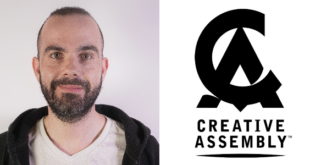Last month Develop took a long look at the evolution of the facial animation sector, and the myriad techniques jostling for developers’ attention. In what is one of the most technologically diverse specialties, marker-based systems compete with video capture technology and the talent of hand animators, and each method has its own distinct pros and cons.
However, in speaking with Cubic Motion’s chief executive Gareth Edwards, it’s clear that while selecting the right means to the ends is of key concern for those undertaking facial animation, the debate over which method is best is perhaps of secondary importance to choosing how to handle any cocktail of approaches.
“Cubic Motion believes the key to overall efficiency is to embrace the idea of adaptable pipelines tailored to each project,” explains Edwards, who joined Cubic Motion in 2009 after a break from his time at Image Metrics, which he founded. “On a game development project of a reasonable size, it’s better to invest slightly more time in getting the pipeline right, in the context of what the production needs, rather than decide on some particular technology up front and attempt to fit everything around it.”
YOU DO THE MATH
Cubic Motion pitches its offering as a meta-system, which provides an open framework for combining animation sub-task algorithms. Instead of championing a single approach, Edwards and his team produce facial animation through a network of interacting systems woven together with principled mathematical concepts. A typical example would be the firm’s data-fusion system, which splices a trio of independent feeds combining mo-cap data and video.
While Cubic Motion does handle entire facial animation projects outsourced to it by developers, it also works to support teams keen to keep the creative process within the walls of their studio, which is where offering an adaptive and tailoured pipeline comes in. Edwards and his colleagues boast years of highly specialised experience, and it is that understanding that lets them support animators still struggling with emerging technology.
“Wherever we see systems that aren’t delivering, it’s usually because the team violated the rule, well-known in software development but not always applied to building animation pipelines, to optimise at the end’,” explains Edwards.
“For example, you sometimes see teams fretting about whether to use a capture system accurate to, say one or two millimeter, before they’ve even settled on the character rigs, when in most cases getting the rig right or wrong outweighs the impact of choosing one or the other capture system. It’s easy to invest in the wrong place if you don’t consider the whole pipeline.”
In fact, Edwards highlights character rigging as potentially more important than any other part of the pipeline. After all, it’s those rigs that drive much of the animation in game, and any performance capture is ultimately expressed through that rig.
“The key is to be aware of the mechanism by which capture data is expressed through a rig; it’s no good simply coming up with something that can hit all the shapes by some magical – and unfathomable – combination of controls.”
Edwards and his co-workers clearly respect the role of the human touch, and according to the sector veteran, facial animation and automated rigging technologies should provide a compliment to rigging artists, providing support rather than offering
an alternative.
WE ARE THE MODS
The modular system for the assembly algorithmic components implemented by Cubic Motion might sound like a lot of work, as adaptive pipelines effectively entail the creation of a new approach for every project, but Edwards and his team are confident their approach is notably rapid and efficient.
Looking to the future, Edwards has a positive perspective – he sees trends affecting the entire industry as a defining factor: “One of the unknowns of the next few years is how facial animation, like many other sub-activities of development, will split between outsourcing and in-house work. We expect them to co-exist for many years to come.
“One certainty is that the industry is getting much better at facial animation. This is driving unit costs down and increasing developers’ capacity for extensive, high-quality character animation in their game.”
www.cubicmotion.com

 MCV/DEVELOP News, events, research and jobs from the games industry
MCV/DEVELOP News, events, research and jobs from the games industry



